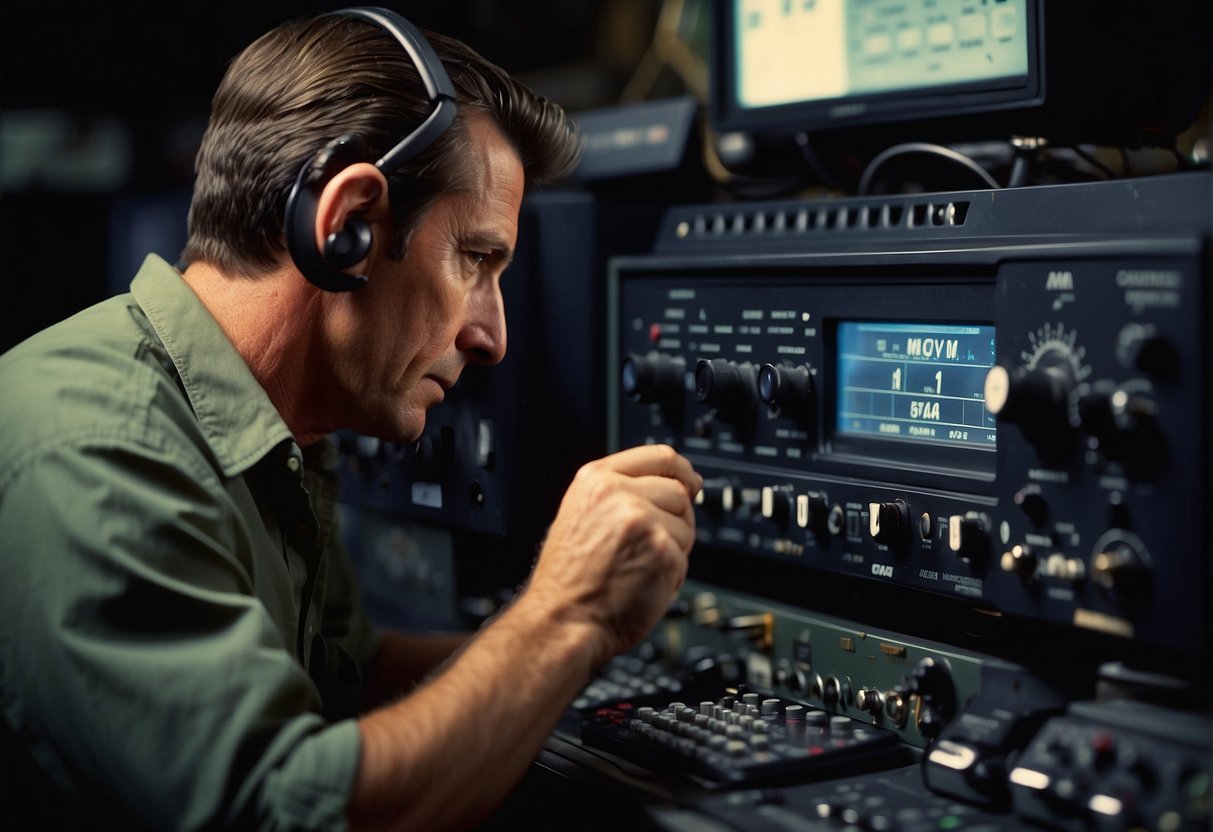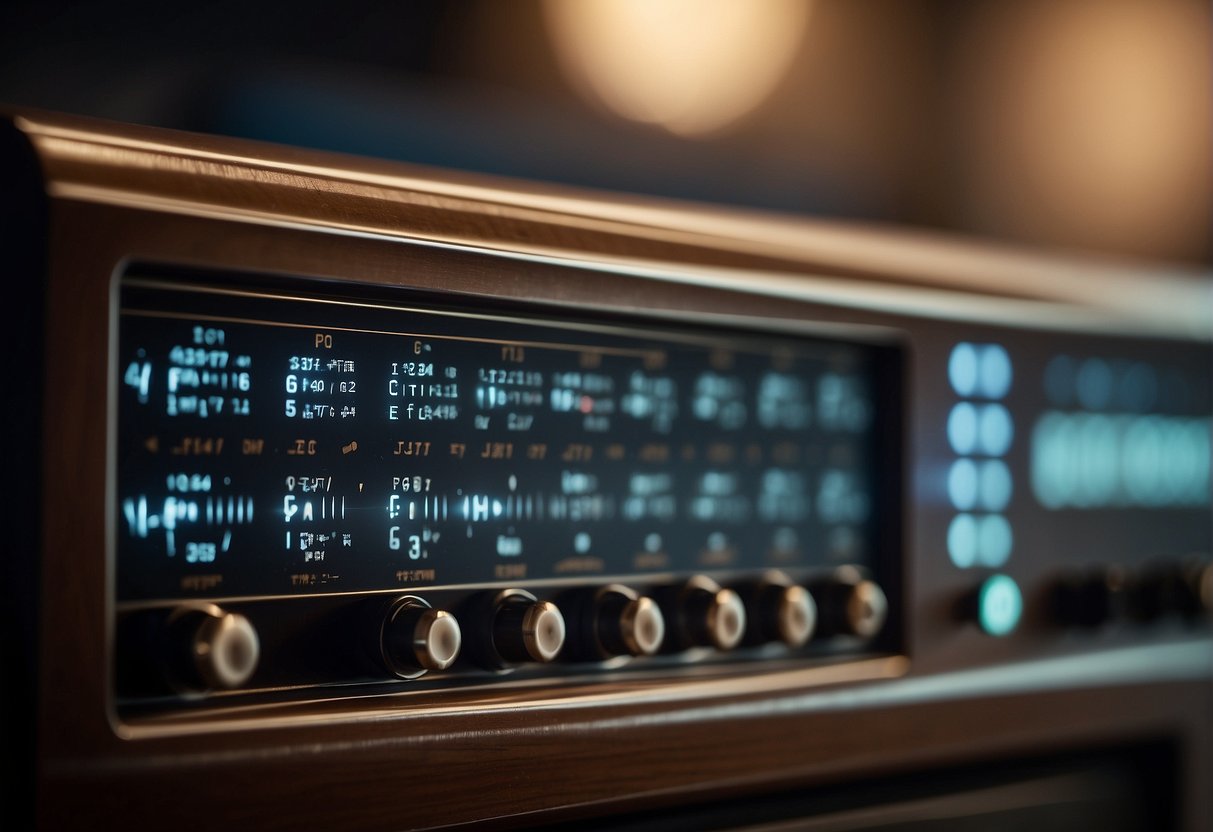In the realm of amateur radio, the term CW stands for Continuous Wave, an early form of wireless communication. This mode of operation uses Morse code, a system of dots and dashes, to encode and transmit information over the radio spectrum. CW is highly revered for its simplicity and efficiency, particularly in challenging conditions where signal strength is weak and bandwidth is limited.


As opposed to more modern modes of transmission such as AM and FM, CW transmissions are not used for conveying voice. Instead, operators tap out messages in Morse code, which can be deciphered across vast distances even with low power. The allure of CW lies in its blend of tradition and skill, as well as its robustness, making it a popular mode among amateur radio enthusiasts globally. Setting up a CW station requires an understanding of the equipment and the ability to send and receive Morse code, which remains a rewarding skill in the ham radio community.
Key Takeaways
- CW in ham radio refers to the use of Morse code over Continuous Wave signals.
- CW transmissions excel in clarity over long distances, even with low power and limited bandwidth.
- Although technology has advanced, CW remains a valued mode in ham radio for its efficiency and historical significance.
Understanding Continuous Wave (CW) in Ham Radio
Continuous Wave (CW) is a mode of radio communication where Morse code is used to encode the transmission, enabling messages to be sent over long distances with modest equipment and antennas.


The Role of Morse Code in CW Communication
Morse code forms the foundation of CW communication in ham radio. It uses a series of dots (short signals) and dashes (long signals) to represent letters, numbers, and punctuation. In a CW transmission, the continuous wave is turned on and off to form the dots and dashes of Morse code, which is then decoded by the receiver. This simplicity allows for efficient use of bandwidth and provides a means to communicate across vast distances with minimal signal strength.
Essential CW Abbreviations and Prosigns
During a CW transmission, operators often use a set of established abbreviations and prosigns to speed up communication and conserve bandwidth. Common abbreviations include “CQ” for seeking new contacts and “73” for best regards. Prosigns such as “” indicating end of message, and “” signaling an end of transmission, facilitate clear procedures. For example, operators might use the abbreviation “QSO” to refer to a conversation and “QTH” to indicate their location.
Comparing CW with Other Modes of Transmission
CW is one mode among several in ham radio, each with its own applications and advantages. Modes like Amplitude Modulation (AM) and Frequency Modulation (FM) are primarily used for voice transmission, while Single-Sideband (SSB) is a form of AM that is more efficient for longer distance voice communication. CW stands out for its efficiency in weak signal conditions and minimalist requirements, such as a simple antenna setup, making it a reliable mode under challenging conditions. Unlike other modes, CW’s unique utilization of Morse code allows operators to discern signals that might otherwise be lost to noise in other modes of transmission.
Setting Up Your CW Station
To successfully engage in CW communication within the amateur radio sphere, one must carefully select the appropriate equipment and ensure proper antenna setup. These crucial steps are fundamental for optimal CW operation.
Choosing the Right Equipment for CW
When it comes to assembling a CW station, the centerpiece is the transceiver. One should opt for a transceiver that feels comfortable to operate and meets the power requirements for intended use. For learning and practice, a low-power, or QRP transceiver might be preferred. These are designed for minimal power usage, often below 5 watts, yet still offer a rich learning experience.
Transceivers should be paired with a suitable key or keyer, which facilitates the input of Morse code. There are various keys available, such as straight keys, iambic paddles, and single-lever paddles. Each variant provides a different experience, and choosing depends on personal preference and proficiency level. Learning Morse Code or CW – HAM Radio for Non-Techies offers some insights into the world of CW via amateur radio.
Essentials of Antenna and Tuner for Effective CW Transmission
The antenna needs to be resonant on the bands you plan to operate. For effective CW operation, a well-tuned antenna is crucial for clear signal transmission and reception. A straightforward dipole or a vertical antenna can be very effective for CW communication, especially on the HF (High Frequency) bands.
In addition to the antenna itself, an antenna tuner becomes invaluable when the antenna is not perfectly matched to the transmission frequency. This piece of equipment helps in adjusting the antenna system’s impedance to the optimal level for the transceiver. This ensures maximum power is radiated from the antenna, which is particularly important for CW operation as it relies on clarity and precision of signal. Setting Up a Station – ARRL emphasizes the importance of a good location and adequate power when setting up your station, which applies to ensuring your antenna and tuner are well appointed.
By attentively choosing a functional transceiver, learning the intricacies of your key, and dedicating time to optimize your antenna setup with the help of an antenna tuner, one can establish a capable and effective CW station.
Operating CW on the Amateur Bands
CW, or Morse code, is an intriguing mode of communication in amateur radio that utilizes specific frequencies within the HF, VHF, and UHF bands. The crisp dots and dashes of Morse code cut through the airwaves, allowing operators to make contacts, exchange information, and even forge international friendships.
Basic CW Operating Procedures
When operating CW, amateur radio enthusiasts adhere to traditional procedures to facilitate clear communication. The HF bands are predominantly used for long-distance CW contacts, also known as DX, while VHF and UHF bands generally serve for local or regional contacts. A standard exchange might include signal reports, location (QTH), and the operator’s name. The common calling frequency, often initiated with “CQ,” invites any available operator to respond, whereas “KN” indicates a call to specific operators.
Making a CW QSO: A Step-by-Step Guide
A successful CW QSO (conversation) follows a structured protocol:
- Calling CQ: To start, an operator calls “CQ” followed by their call sign, inviting a response from any listening station.
- Response: Another operator responds by sending back the caller’s call sign and their own.
- Exchange: The first operator transmits a signal report (RST), their QTH, and name. The responding station does the same.
- Acknowledgment: Each operator acknowledges the received information.
- Closure: The QSO is concluded with “SK” or “VA,” signaling the end of the conversation.
Learning and Improving Your CW Skills
Learning CW is a process that involves practice and familiarization with Morse code. Many operators begin by learning Morse code with aids like software applications, online tutorials, or radio club classes. Improving proficiency is a matter of regular practice and on-air experience, with operators of all skill levels encouraged to participate and hone their skills. Advanced operators might chase DX stations or participate in CW contests to test their abilities under various conditions.
The Cultural Significance of CW in Ham Radio
CW (Continuous Wave) Morse code not only represents a historical method of communication but also embodies a substantial part of ham radio culture that continues to thrive among amateur radio enthusiasts.
CW: A Rich Tradition in Amateur Radio
CW Morse code has been interwoven with the history of amateur radio since its inception. It started as the primary mode of transmission, with roots tracing back to wired telegraphy from the 19th century. For many years, Morse code was the gatekeeper for amateur radio operators, often required for licensure and seen as a rite of passage into the hobby. A subtle art of communication, CW has its own language of abbreviations and procedures that foster a deep sense of tradition and community among enthusiasts. Frequent “ragchewing” sessions, an amateur radio term for casual conversational exchanges, exemplify the culture of camaraderie that CW promotes.
Why CW Continues to Be Relevant in the Modern Age
Despite the advent of modern communication technologies, CW maintains relevance for several key reasons. Its simplicity and efficiency make it a valuable mode in scenarios where voice or digital communication might fail. In emergency communications, CW signals can often get through when others cannot, and this resilience makes it treasured amongst radio operators. Moreover, within the amateur radio community, there remains a substantial segment of operators who enjoy CW for the skill and proficiency it demands and the unique connection it fosters within the CW fraternity. The act of decoding and encoding Morse Code provides a mental challenge, and many affirm that it sharpens their cognitive abilities. It’s not just about nostalgia; it’s about preserving a skill set that is both practical and rewarding.
Frequently Asked Questions
In the world of amateur radio, CW holds a notable position for its efficiency and historical significance. Here are succinct answers to common inquiries about CW in ham radio.
What does CW stand for in amateur radio communications?
CW in the context of amateur radio stands for “Continuous Wave,” a mode of communication using Morse code signals. It is a method that has been historically central to ham radio.
How do you operate a ham radio in CW mode?
Operating a ham radio in CW mode involves generating Morse code by switching the radio’s transmitter on and off with a timing consistent with the standardized code. Operators use a device like a key or paddles to create these signals.
How does CW differ from other modes like SSB in ham radio usage?
CW, using on-off keying of a single frequency, is distinct from Single Sideband (SSB) in that it occupies less bandwidth and typically can be received clearly over longer distances or in poor conditions compared to voice transmission modes like SSB.
Can Morse code be used interchangeably with CW in ham radio transmissions?
Morse code and CW are often used interchangeably in ham radio as Morse code is the language used in CW transmission. However, CW refers specifically to the transmission method employing Morse code with a continuous carrier wave.
Why might amateur radio operators prefer using CW over other modes?
Some amateur radio operators prefer using CW because it often requires less power, can be deciphered despite interference or weak signals, and is ideal for long-distance communication known as DXing.
What are the benefits of learning and using CW for ham radio operation?
The benefits of learning and using CW include improving an operator’s ability to communicate under a variety of conditions, fostering international communication through a universally recognized code, and enjoying a traditional and skillful aspect of ham radio culture.





